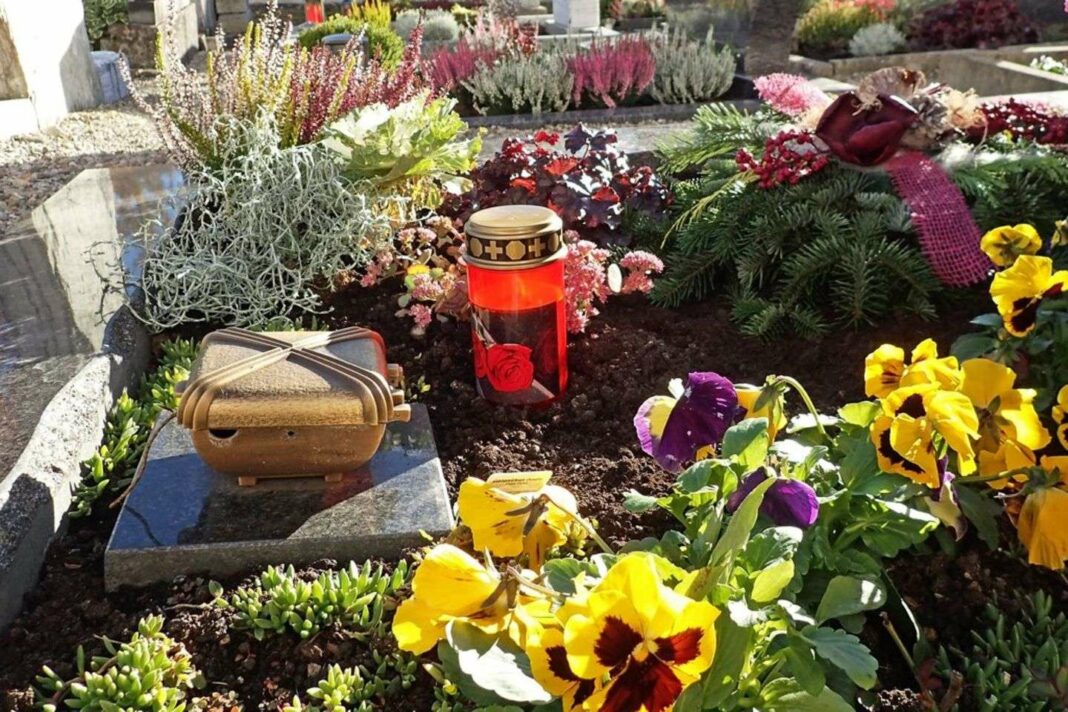The article discusses the significance of graves as memorials for the bereaved and offers guidance on maintaining them. It highlights the importance of selecting low-maintenance plants, such as ground cover varieties, to simplify upkeep while enhancing the grave’s appearance. Seasonal decorations, like plant bowls and small statues, are recommended for minimal effort. Additionally, the choice of headstone and surface can affect maintenance levels. Overall, the piece provides practical tips for creating beautiful, low-maintenance grave designs.
A grave serves as a significant memorial for those mourning the loss of a loved one. For some, it’s a tranquil sanctuary; for others, a place to connect with the deceased, while many see visiting the cemetery as a duty. Regardless, caring for a grave requires attention and effort.
All Saints’ Day stands out as one of the primary occasions for individuals to honor the deceased by decorating their graves with beautiful arrangements, alongside commemorating their birth and death anniversaries. Many hours can be devoted to grave maintenance, but to minimize this throughout the year, consider these tips for planting and designing a grave effectively.
Choosing Low-Maintenance Plants for Graves
The type of plants selected plays a vital role in determining the amount of maintenance needed for a grave. Ground cover plants are especially favored in cemetery settings. These plants spread out horizontally rather than vertically, quickly forming a lush carpet that protects the soil and requires minimal care. They help suppress weeds while remaining green throughout the year.
Ground covers come in various types, and selecting the right one depends on the grave’s location—whether it receives full sun or is partially shaded. For instance, the small periwinkle (Vinca minor) is available in blue and white varieties. The blue version thrives in sunny spots, while the white variant prefers shaded areas. Ivy is another excellent choice for graves, thriving in shade and providing year-round greenery, embodying loyalty and immortality.
Additionally, shrubs like boxwoods and thuja enhance the appearance of larger graves, offering a defined structure with minimal upkeep—typically requiring just an annual trim.
For sunny locations, rockery plants such as sedum or stonecrop are ideal, adding vibrant color through their flowers and succulent forms.
Utilizing Ground Cover to Reduce Effort
Choosing fewer plants translates to less work at the grave site. Many opt to cover graves with materials like white stones or bark mulch, which are particularly effective in hindering weed growth, thus simplifying maintenance. These coverings also create spaces suitable for decorative arrangements, plant bowls, or other memorial items.
Plant bowls present a delightful means to seasonally adorn a grave with minimal time commitment. These can be purchased pre-made or custom-designed by a florist, proving more cost-effective than hiring a professional service for grave care. Alternatively, creating a grave bowl at home is also an excellent option.
For even less maintenance, consider decorative items like small angel statues or heart-shaped stones, which only require occasional cleaning.
Selecting the Right Headstone for Low-Maintenance Graves
The maintenance level of a grave also depends on its type. For example, a small urn grave typically demands less upkeep compared to a larger family plot. Many modern graves feature extensive stone slabs that largely replace soil, resulting in decreased maintenance efforts for plants. Such graves look well-kept even without regular visits; only the condition of cut flowers might indicate the last visit.
However, these full-surface gravestones and borders often come with a higher price tag and require routine cleaning. Yet, like bark mulch, they provide a versatile backdrop for various decorations, including floral arrangements for All Saints’ Day or seasonal plantings in bowls. Small indentations within the grave slab present opportunities for creative, low-maintenance planting.
